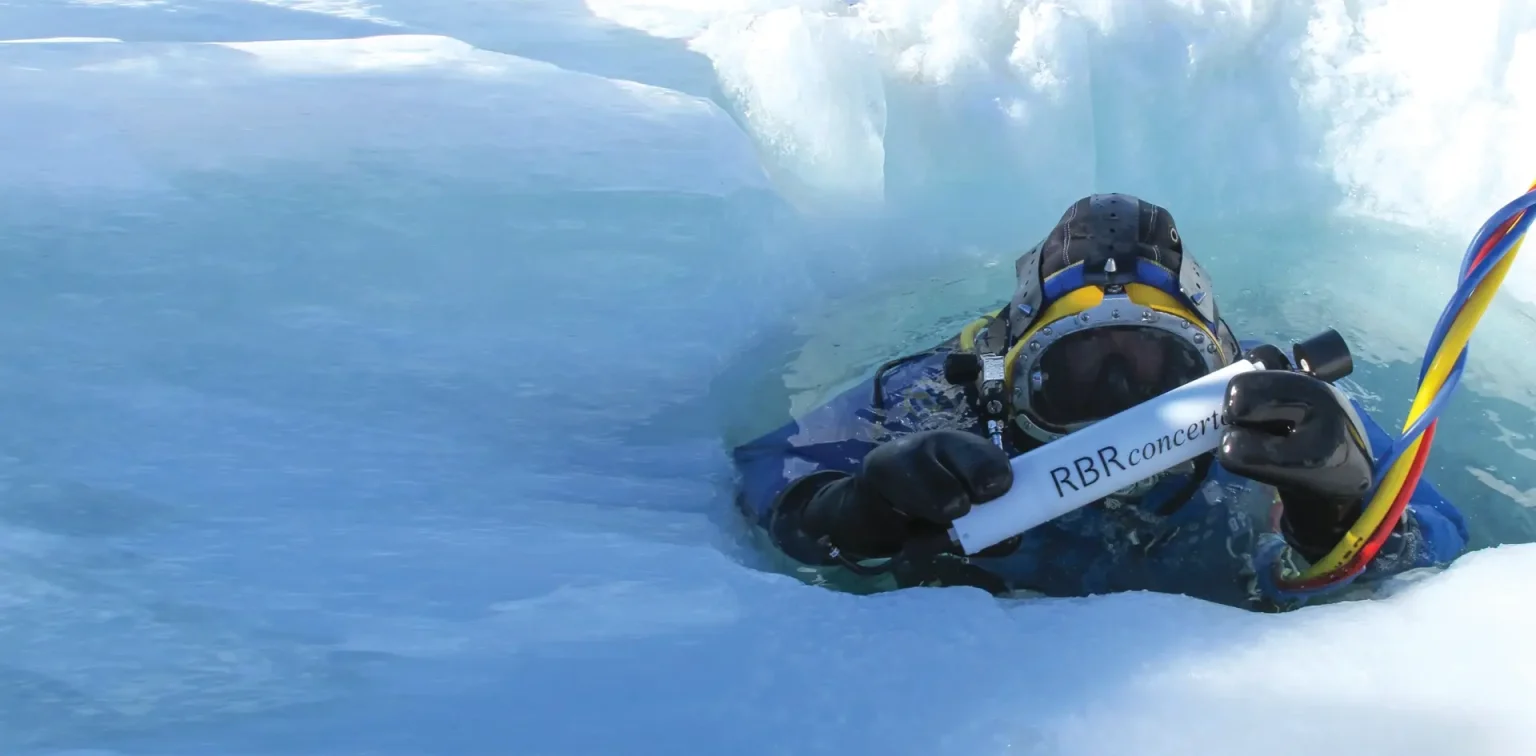long deployments
RBRsolo³ PAR, RBRsolo³ rad
PAR and narrow-band logging radiometers
The RBRsolo³ PAR and RBRsolo³ rad logging radiometers feature a wide dynamic range, optimized cosine response, and excellent low-light detection, making them ideal for both moored and profiling applications. Both instruments feature a rugged, low-power design that allows for long deployments with a single AA battery.
- Long deployments
- High accuracy
- Wide dynamic range
- One AA battery (alkaline or lithium iron)
- USB-C download
- Compact and lightweight
- Cabled RBRcoda³ radiometers available
Features & Configurations
The RBRsolo³ PAR provides uniform response to light in the PAR spectral range, while the RBRsolo³ rad is available in a variety of narrow-band light channels and channel widths. Large storage capacity and reliable battery power facilitate long deployments with higher sampling rates. Downloads are quick with USB-C. A dedicated desiccant holder makes it simple to replace desiccant before each deployment. The calibration coefficients are stored with the instrument, and only one software tool, Ruskin, is required to operate it. Datasets can be read directly in Matlab, or exported to Excel, OceanDataView®, or text files.
Optional Configurations
| RBRsolo³ PAR | photosynthetically active radiation, uniform response between 400 and 700nm, depths up to 1000m |
|---|---|
| RBRsolo³ PAR | deep | photosynthetically active radiation, uniform response between 400 and 700nm, depths up to 2000m |
| RBRsolo³ rad | narrow-band radiation, 10nm- and 25nm-wide wavelength channels from 380nm to 560nm, depths up to 1000m |
| RBRsolo³ rad | deep | narrow-band radiation, 10nm- and 25nm-wide wavelength channels from 380nm to 560nm, depths up to 2000m |
Specifications
| Sampling | 12mJ per sample (1Hz or slower) 6mA/22mW (2Hz or faster) |
|---|---|
| Sleep current | 10µA |
| Dynamic range | >5.5 decades |
|---|---|
| Initial accuracyFootnote 1 | ±2% |
| Linearity | ±1% |
| Operating temperature range | -5°C to 35°C |
| Cosine response error (water) | ±5% at 0-60° ±10% at 61-82° |
| Azimuth error (water) | ±1.5% at 45° |
| Out-of-band rejectionFootnote 2 | >25dB (typical), OD 2.5 |
(1) RBR calibrates radiometers with NIST traceable references.
(2) Out-of-band rejection and resolution are wavelength dependent for narrow-band radiometers.
| Wavelength range | 400 to 700nm |
|---|---|
| Full scale range | 0-5000µmol/m²/s (minimum) |
| Resolution | ±0.010μmol/m²/s |
| Centre wavelengths (CWL)Footnote 3 | 380 / 413 / 445 / 475 / 488 / 508 / 532 / 560nm |
|---|---|
| Full width at half-maximum (FWHM) | 10nm (for all CWLs except 475nm) >25nm (for CWL 475nm only) |
| Full scale range | 0-400μW/cm²/nm (minimum) |
| ResolutionFootnote 4 | ±0.001μW/cm²/nm |
(3) Other CWL options within the 300-1100nm range are available upon request. Contact RBR for more information.
(4) Resolution is wavelength dependent for narrow-band radiometers.

